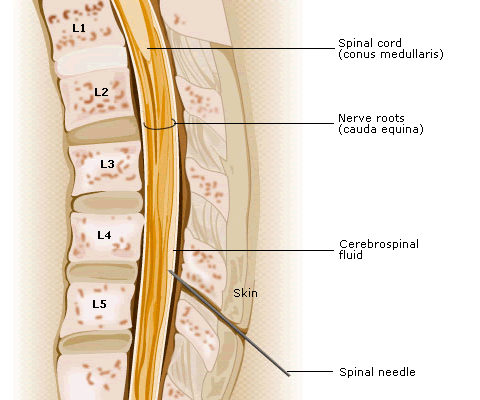Momentary
Momentary, short-lived paraesthesia is very commonly felt at the time of insertion of a spinal or epidural catheter. This is because of contact with nerve roots.
If paraesthesia resolves immediately, it is not generally any cause for concern. However, if the pain persists, or is associated with injection through the needle or catheter, injection should be stopped and the device removed.
Severe, lancinating pain is a particular worry, as it may signify intraneural placement. To reduce the risk of damaging the solid cord, spinal injection is not performed above the level of the lower border of L2.

Fig 1 Sagittal section of spinal anaesthesia. Contact with nerve roots can elicit paraesthesia. Epidural catheters can contact nerve roots extraduraly. This image serves as a reminder why spinal anaesthesia is restricted to the lower lumbar region to avoid damaging the solid cord